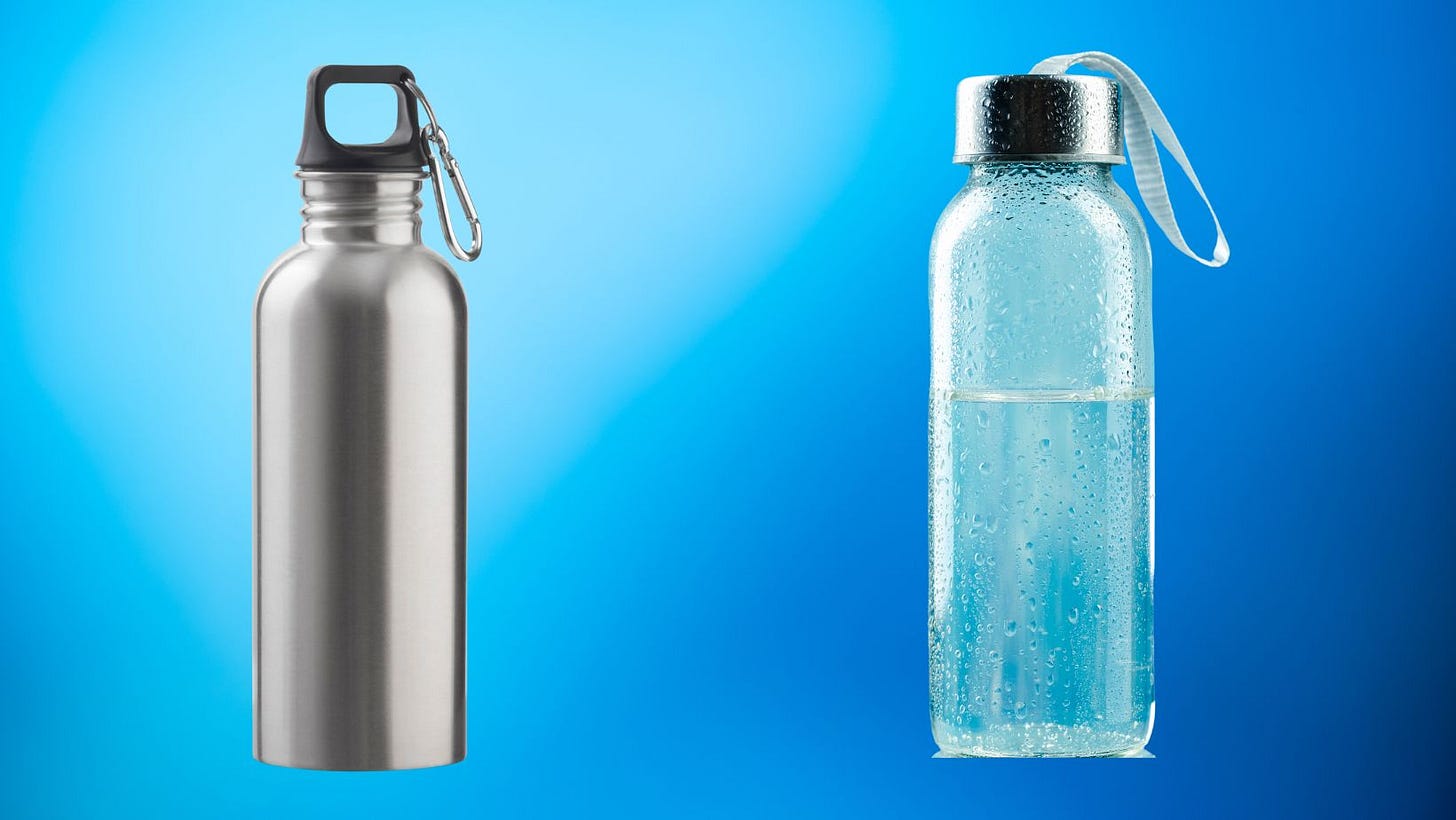In the ongoing pursuit to minimize our carbon footprint, consumers are faced with a multitude of choices. Among them is the choice of a reusable water bottle. Two popular options that have emerged as leaders in the sustainable movement are stainless steel and glass bottles. But which one takes the crown in terms of sustainability? Let's dive in.
Stainless Steel Water Bottles
Highlighted Product: Hydro Flask Stainless Steel Water Bottle (Affiliate link)
Pros:
Durability: These bottles are built to last, with some consumers reporting multiple years of usage without significant wear and tear.
Temperature Retention: Stainless steel, especially when double-walled, is excellent for maintaining your beverage's temperature.
Weight: Generally lighter than glass, making them more portable.
Cons:
Metallic Taste: Some users report a slight metallic taste, especially when the bottle is new.
Heat Conduction: Can get very hot or cold on the outside, depending on the beverage inside.
Glass Water Bottles
Highlighted Product: Lifefactory Glass Water Bottle (Affiliate link)
Pros:
Taste: Glass doesn't impart any flavor, ensuring a clean taste with every sip.
Transparency: You can easily see how much liquid is left.
Chemical-Free: Glass is naturally free from BPA and other potential chemicals.
Cons:
Fragility: Even with protective silicone sleeves, glass bottles can break if dropped.
Weight: Tend to be heavier than their stainless steel counterparts.
Sustainability Comparison
Manufacturing Process: Both stainless steel and glass require significant energy in their manufacturing process. However, stainless steel often has a higher carbon footprint due to the mining of its raw materials. Glass, on the other hand, is made primarily from sand, which is more abundant and requires less processing.
Recyclability: Both materials are recyclable. Stainless steel can be recycled without loss of quality, while glass can be recycled multiple times, though with slight degradation each time.
Lifespan: Stainless steel generally has a longer lifespan due to its resistance to breaking. While glass can last just as long with care, it's more susceptible to accidents.
Conclusion:
Both stainless steel and glass water bottles offer a sustainable alternative to single-use plastic bottles. In terms of environmental impact, glass seems to have a slight edge due to its raw material sourcing and recyclability. However, in practical, day-to-day use, some might prefer the durability of stainless steel.
If you prioritize taste and are careful with your belongings, the Lifefactory Glass Water Bottle is a fantastic choice. (Affiliate link) For those on the go, often traveling, or involved in outdoor activities, the Hydro Flask Stainless Steel Water Bottle offers durability and performance. (Affiliate link)
Whichever you choose, remember that the best bottle is the one you'll use consistently. Reducing single-use plastics is the ultimate goal.
Disclaimer: This article contains affiliate links. Purchases made through these links may generate a commission for the author, at no additional cost to the reader.




